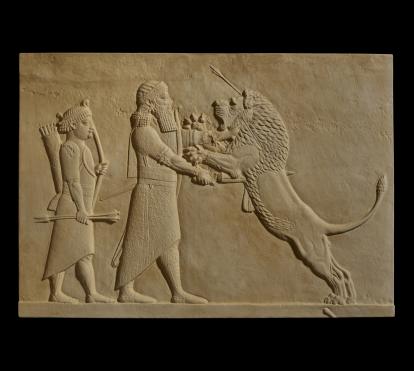
Warrior. Scholar. Empire builder. King slayer. Lion hunter. Ashurbanipal, king of Assyria, one of history’s greatest forgotten kings, is revealed in all his glory in this exhibition in collaboration with the British Museum.
The exhibition presents this complex and powerful ruler while highlighting the importance of preserving Assyrian cultural heritage. Between 669 BC and 631 BC, Ashurbanipal ruled the world’s largest empire from the city of Nineveh, modern-day Mosul, in northern Iraq.
His reign marked the high point of the Assyrian Empire, which stretched from the shores of the eastern Mediterranean to the mountains of western Iran, and witnessed the flourishing of its economy, the spread of artistic styles, schools of thought and human movement throughout the Mediterranean and the Middle East.
Featuring over 150 objects, the exhibition I am Ashurbanipal, king of the world, king of Assyria traces the life and influence of this remarkable figure through items from the British Museum’s collection, placing his historical significance into perspective.
The exhibition will reveal Ashurbanipal’s military training, which included chariot driving, horse riding and archery and his displays of bravery as a lion hunter. Visitors will get a glimpse of the opulence of the palaces in which he lived and the royal gardens of Nineveh, an oasis filled with flora from across the empire. It will also highlight his library of cuneiform manuscripts, housed in his palace and born of his ambition to gather all existing knowledge, texts that have provided insight into the medicine, religion and history of the period. The exhibition will also illustrate his displays of power and the humiliation he inflicted on defeated enemies – even when that enemy was his own brother – alongside his equally significant skills in strategy and diplomacy.
Finally, it will examine the role played by the British Museum in the rediscovery of ancient Assyrian remains and in introducing Ashurbanipal’s world to the European imagination of the 19th century.
- Curator: Sébastien Rey, curator of Ancient Mesopotamia in the Middle East Department at the British Museum.
- Organisation: Exhibition produced in collaboration between the British Museum and the ”la Caixa” Foundation


